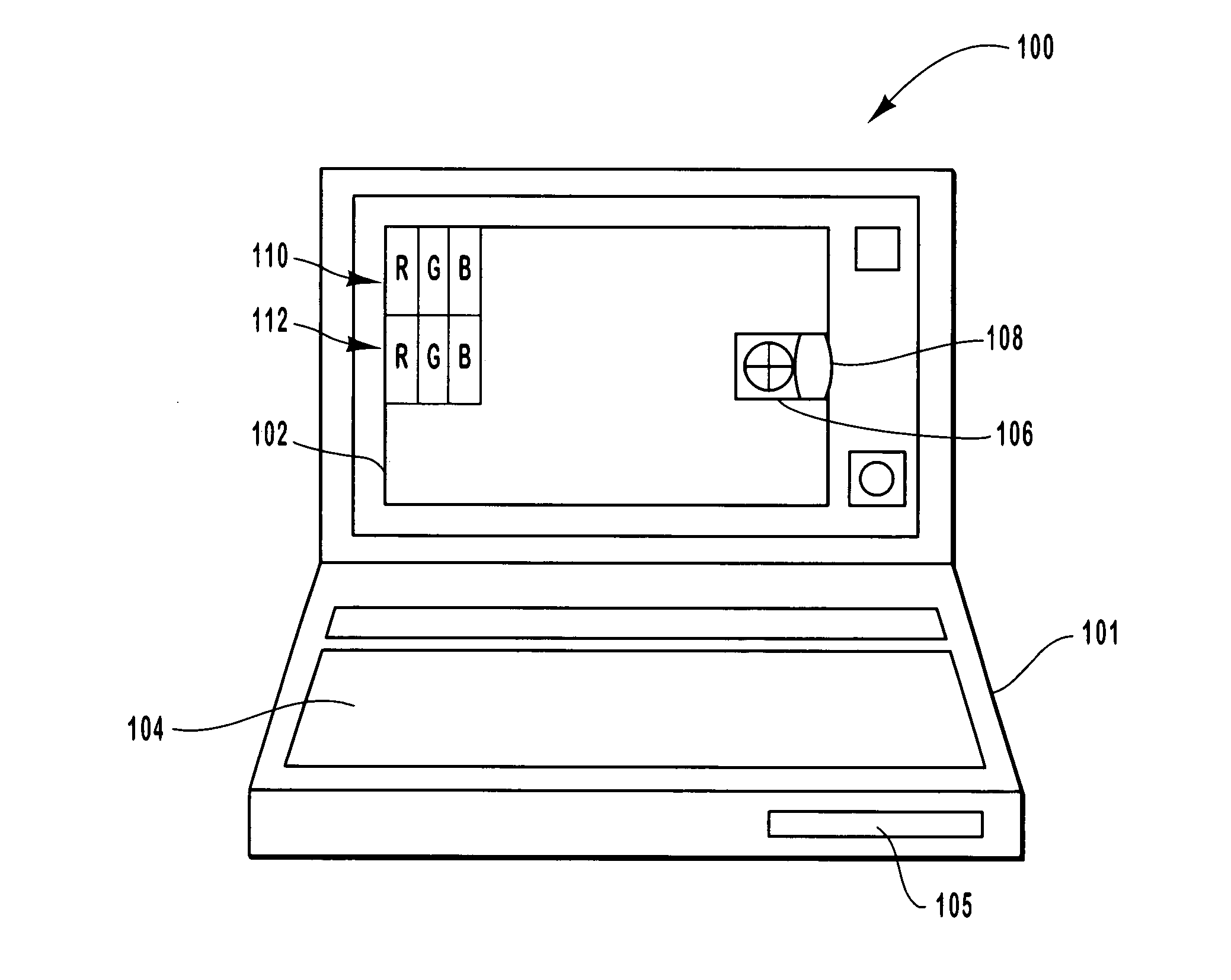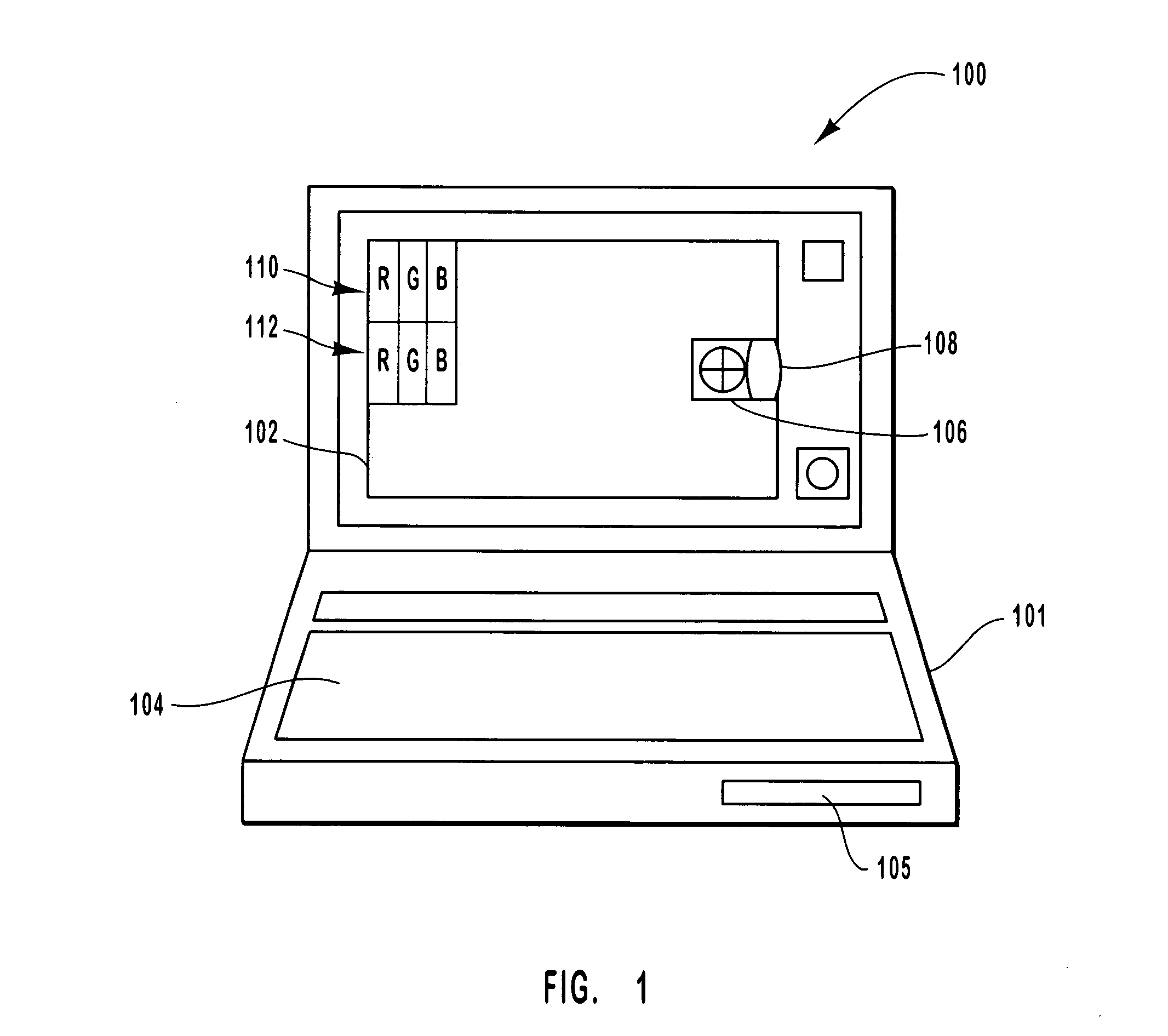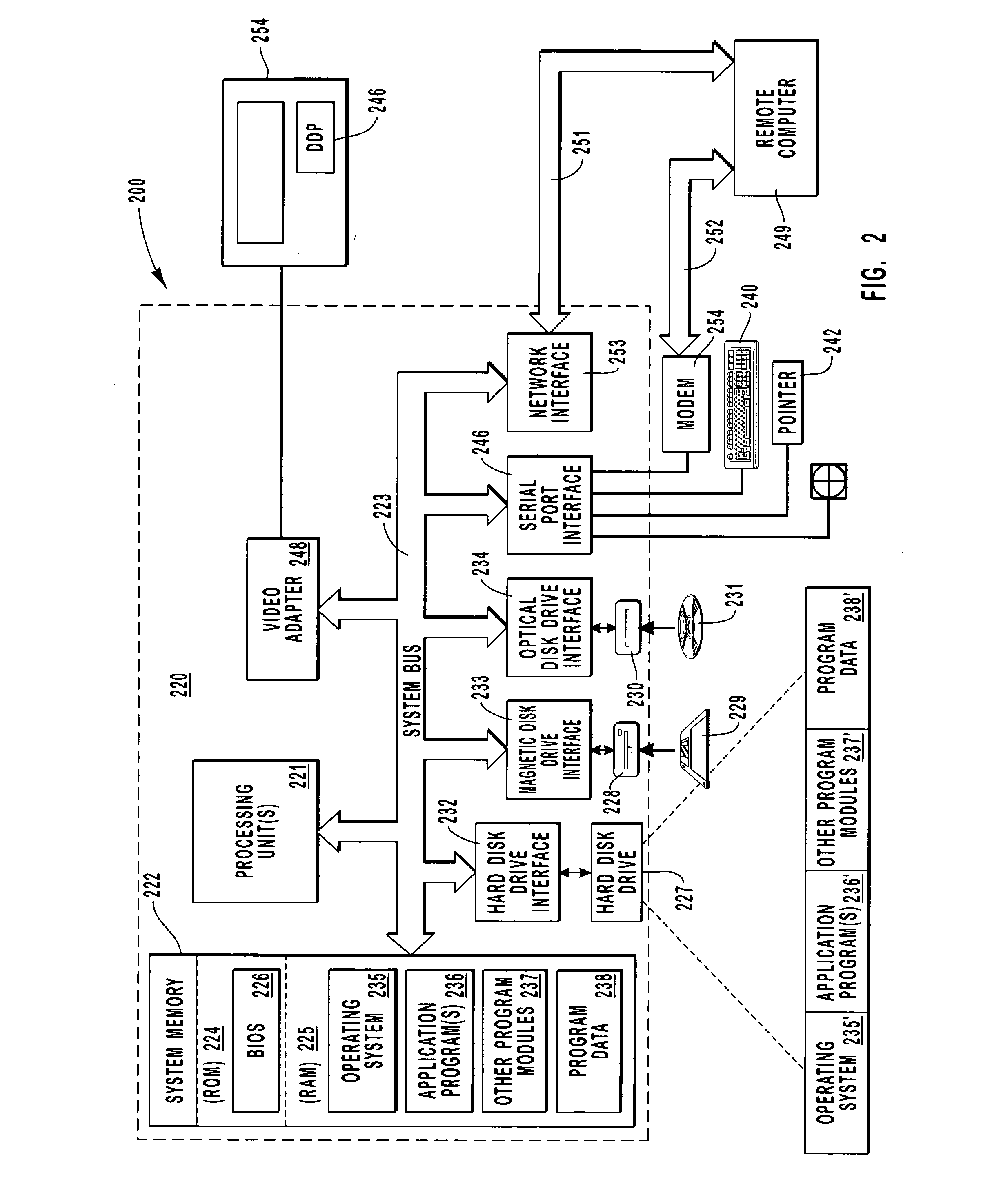Quality of displayed images with user preference information
a technology of user preference and displayed images, applied in the field of increasing the perceived quality of displayed images, can solve the problems of affecting the perceived quality of lcd displays, flat panel displays tend to be small and lightweight, and older computer crt display devices are more difficult to read than new crts
- Summary
- Abstract
- Description
- Claims
- Application Information
AI Technical Summary
Benefits of technology
Problems solved by technology
Method used
Image
Examples
Embodiment Construction
[0045] FIG. 1 illustrates a portable computer system 100, which comprises a housing 101, a disk drive 105, keyboard 104 and a flat panel display 102. The display 102 is implemented as an LCD display device with vertical RGB striping. Each set of R, G, B pixel sub-components 110, 112 represent one pixel. While only two pixels 110, 112 are shown, it is to be understood that the display 102 comprises many rows and columns of such pixels. The computer system 100 includes a light measuring device 106 which is mounted using a hinge 108. The sensor 106 can be positioned in front of the display 102, as shown in FIG. 1, to measure the actual light output of the display 102. Such measurements may be taken periodically, in accordance with the present invention, when data on the state of the display device 102 is to be measured and used for updating a display profile. During the measurement, a pre-selected test pattern may be displayed on the screen 102.
[0046] When not being used to measure scr...
PUM
 Login to View More
Login to View More Abstract
Description
Claims
Application Information
 Login to View More
Login to View More - R&D
- Intellectual Property
- Life Sciences
- Materials
- Tech Scout
- Unparalleled Data Quality
- Higher Quality Content
- 60% Fewer Hallucinations
Browse by: Latest US Patents, China's latest patents, Technical Efficacy Thesaurus, Application Domain, Technology Topic, Popular Technical Reports.
© 2025 PatSnap. All rights reserved.Legal|Privacy policy|Modern Slavery Act Transparency Statement|Sitemap|About US| Contact US: help@patsnap.com



